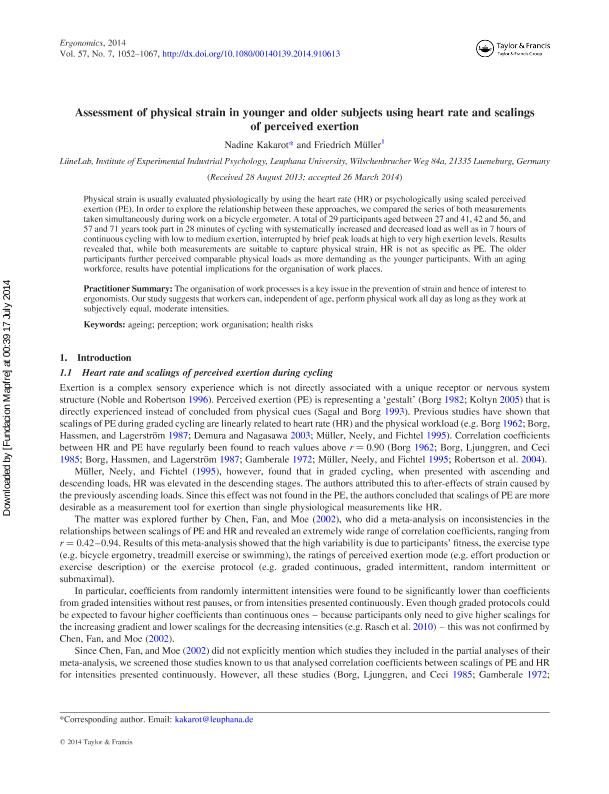Assessment of physical strain in younger and older subjects using heart rate and scalings of perceived exertion

Contenido multimedia no disponible por derechos de autor o por acceso restringido. Contacte con la institución para más información.
| Tag | 1 | 2 | Valor |
|---|---|---|---|
| LDR | 00000cab a2200000 4500 | ||
| 001 | MAP20140025879 | ||
| 003 | MAP | ||
| 005 | 20140724124913.0 | ||
| 008 | 140717e20140707esp|||p |0|||b|spa d | ||
| 040 | $aMAP$bspa$dMAP | ||
| 084 | $a875 | ||
| 100 | $0MAPA20120011281$aKakarot, Nadine | ||
| 245 | 1 | 0 | $aAssessment of physical strain in younger and older subjects using heart rate and scalings of perceived exertion$cNadine Kakarot, Friedrich Müller |
| 520 | $aPhysical strain is usually evaluated physiologically by using the heart rate (HR) or psychologically using scaled perceived exertion (PE). In order to explore the relationship between these approaches, we compared the series of both measurements taken simultaneously during work on a bicycle ergometer. A total of 29 participants aged between 27 and 41, 42 and 56, and 57 and 71 years took part in 28 minutes of cycling with systematically increased and decreased load as well as in 7 hours of continuous cycling with low to medium exertion, interrupted by brief peak loads at high to very high exertion levels. Results revealed that, while both measurements are suitable to capture physical strain, HR is not as specific as PE. The older participants further perceived comparable physical loads as more demanding as the younger participants. With an aging workforce, results have potential implications for the organisation of work places. | ||
| 773 | 0 | $wMAP20100019818$tErgonomics : the international journal of research and practice in human factors and ergonomics$dOxon [United Kingdom] : Taylor & Francis, 2010-$x0014-0139$g07/07/2014 Volumen 57 Número 7 - julio 2014 |

